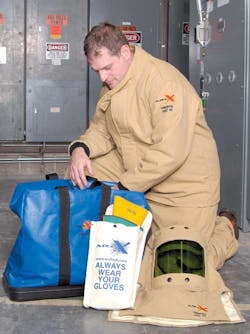Avoiding Arc Flash Hazards
He cites numbers to the effect that the cost to an employer and insurance company can be $8 million to $10 million if the victim survives. The National Fire Protection Association (NFPA) in its standard NFPA 70E 2004, which is about to revised later this year or next, describes a detailed reference for facilities to meet the requirements of workplace electrical safety. The regulation is also known as the National Electrical Code.Weigel notes that the regulation has been around for many years and covered all manner of hazards for electrical equipment, but until 2000, it had no way to reference the hazards of arc flash. In that year, after the Institute of Electrical and Electronics Engineers (IEEE) was able to publish formulas for estimating the hazards of arc flash and arc blast, this hazard suddenly went from something people knew anecdotally to something that everyone was discussing.Arc flash incidents affect not only power equipment, but also automation and control. Weigel says that original equipment manufacturers who build control panels are redesigning the panels so that they can isolate the 480 volt AC power from the DC part of the panel, or they are looking at ways to reset the programmable logic controller from outside the cabinet, eliminating a need to open the cabinet door and expose workers to high energy. “This affects almost every one of our customers except maybe for single family home construction,” Weigel adds. Weigel shares a few requirements from the NFPA:1 Establish an electrical safety program with clearly defined responsibilities2 Conduct an electrical system analysis to determine the degree of arc flash hazard3 Conduct safety training for all workers4 Ensure that there is adequate personal protective clothing and equipment on hand5 Ensure the proper tools are on hand for safe electrical work6 Apply warning labels to all equipment.To view the Feature Article, "How to Achieve a Competent Workforce for Safety", go to www.automationworld.com/view-4146

